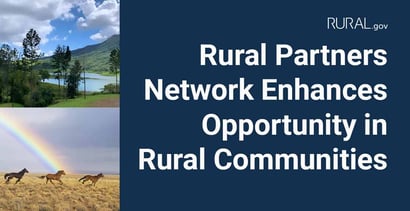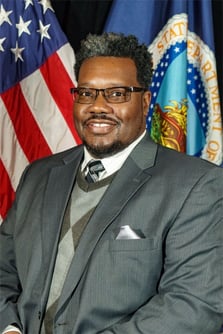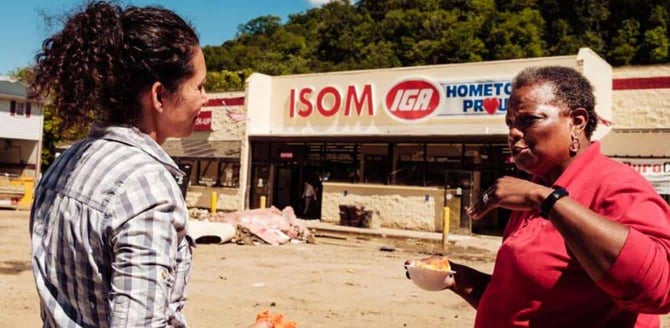
In a Nutshell: Rural communities need federal support to compete in the modern economy. But securing federal assistance for local job creation, infrastructure development, and community improvement — a complex process even for big-city administrators — is particularly challenging for rural communities because leadership is often part time and resource-strapped. The Rural Partners Network (RPN) exists to level the playing field. An agency of the U.S. Department of Agriculture, RPN facilitates collaboration between more than 20 federal agencies and local partners to ensure rural communities can access the resources they need to thrive.
Americans are a tough sell when it comes to appreciating the effectiveness of federal programs. Democracy is about compromise, and executive agencies proliferate in ways many perceive as inefficient. Debatably, that perception is especially pervasive in America’s rural communities, where values of self-reliance lead many to feel the government doesn’t understand their problems or even makes things worse.
There’s an even bigger issue: Rural communities often face administrative challenges that make reaching out for federal assistance far more challenging than it is in cities. Finding and applying for the proper programs requires resources and skill sets that aren’t readily available in communities where leadership is a part-time job with little support staff.
Many federal agencies, including bureaus, commissions, and cabinet-level departments like the U.S. Department of Agriculture (USDA), are ready and willing to help rural communities through inter- and intra-agency coordination on rural development. It’s a matter of matching needs with resources.

One USDA agency, the Rural Partners Network (RPN), exists to make those matches. Executive Director Lee Jones said RPN is an essential resource for communities in 10 states and Puerto Rico, where administrators have identified needs the federal government knows how to fix.
“Rural communities may not have the budget or the connections to economic development professionals and grant writers to allow them to pursue some of the opportunities out there,” Jones said. “RPN builds on a commitment from the Biden-Harris administration to ensure that people living in rural areas have every opportunity to succeed.”
It does that by connecting federal agencies with local partners that provide on-the-ground support. Now’s the time for rural communities to reach out and take new steps forward as recent federal legislation, including the Infrastructure Investment and Jobs Act, the Inflation Reduction Act, and the CHIPS and Science Act, provide unprecedented opportunity.
“We make overcoming barriers and inequities easier for the communities we serve,” Jones said.
A Straightforward Path to Partnerships and Assistance
That’s a big deal in communities such as one in Georgia, where Jones said a mayor told him that if the government sent him a 150-page application to obtain a $25,000 grant for a police vehicle, he’d throw the paperwork in the trash bin because the return wouldn’t be worth the time he’d need to fill it out.
Anyone who knows how the government works understands the need for strict screening, but something has to give when things go out of kilter to that extent. RPN is the result.

“That’s what we mean by a barrier to access,” Jones said. “He just doesn’t have the personnel to pursue an opportunity like that.”
You probably already know RPN’s solution: Dispense with the bureaucracy — at least during the outreach stage. Jones said all RPN initially asks of applicants is a letter of interest expressing a need the sender thinks a government agency can meet. From there, RPN does the heavy lifting and qualitative scanning to determine whether there’s a basis for moving forward.
Then, agency rural desk officers and full-time USDA community liaisons spring into action to work directly with community partners and networks.
Broad lines of support are available for community and economic development, assistance for individuals and families, and strengthening Tribes, Native Americans, and Alaska Natives.
Jones said RPN starts with active listening rather than prescribed solutions, leveraging existing collaborations and connections to bolster the community’s readiness. Communities with high levels of economic distress, low participation in federal programs, and local capacity to take on new responsibilities are a fit.
“Unlike some previous federal place-based initiatives, we’re working with our communities — it’s a collaborative effort,” Jones said.
Prioritizing Community Needs To Get Things Done
The effect can be dramatic. Jones pointed to RPN’s work in southeastern Kentucky after historic flooding in the summer of 2022. The area’s access to recovery resources at the time is an example of the network’s ability to marshal local governments, nonprofit housing organizations, school districts, and federal agencies to overcome organizational and regulatory barriers and get things done.
RPN was successful in Kentucky because its community liaison helped advise the federal Interagency Recovery Coordination team to analyze impacts, recovery activities, and funding available to address specific needs.

RPN team members contacted hundreds of people affected by the disaster to inform them about USDA’s Section 502 home loan and Section 504 home repair programs. The Federal Emergency Management Agency referred more than 700 households to USDA to take advantage of those programs.
Feedback from RPN led the USDA to increase the maximum home repair grant amount from $10,000 to $35,000 to help families recover.
“There are plenty of stories to tell about that, but in particular, we’re able to talk about the impact USDA’s Rural Development office had on our income criteria,” Jones said. “That led to the change in regulations that allowed other communities going through disaster recovery situations to access additional funds for housing repair.”
Since the Kentucky disaster, the USDA has applied the limit increase in home repair grants to other presidentially declared disaster areas, providing federal resources to people impacted by floods and wildfires in New Mexico and hurricanes in Puerto Rico.
“We want to ensure that when we’re working with local organizations, we’re providing a level of assistance to build and help develop new leadership and create a long-term vision for what success looks like in their communities,” Jones said.
Advancing Equitable Rural Prosperity and Opportunity
RPN is successful because it understands that providing relief and future-focused resources to build back better is a people process. Jones said the team doesn’t assume communities necessarily want what it has to offer, sight unseen.
“It’s a strategic engagement process by which we engage local leadership,” he said. “We ask local leadership to connect us with organizations and individuals that could impact the conversation, and we take the time to drill down to what RPN intends to do — and ask them to hold us accountable for that.”
RPN’s involvement with the community network in West Virginia is a prime example of that strategy in action. Downturns in the coal and timber industries due to shifting energy concerns have led to resource depletion and have decimated the economy in West Virginia counties where RPN works, creating a persistent cycle of poverty.
RPN community liaisons are helping the region take advantage of the 2021 designation of New River Gorge National Park and Preserve as the nation’s newest national park to leverage tourism and recreation as a way forward.
Funding for programs like RPN ebbs and flows according to the political winds. But Jones is optimistic that the network’s record of success in 10 states and Puerto Rico will motivate legislators of both parties to expand the program.
RPN operates 36 community networks across that footprint, impacting roughly 140 counties and thousands of households. It’s a sustainable model that points to a new way of doing business with the federal government. That model entails ensuring rural communities get their fair share of assistance in ways that don’t compromise their values.
“I don’t think a week passes where we don’t get an inquiry from a state that’s not part of RPN asking when it’s going to get a chance to become a member,” Jones said. “We want to create a mechanism any rural community can access to be successful.”


